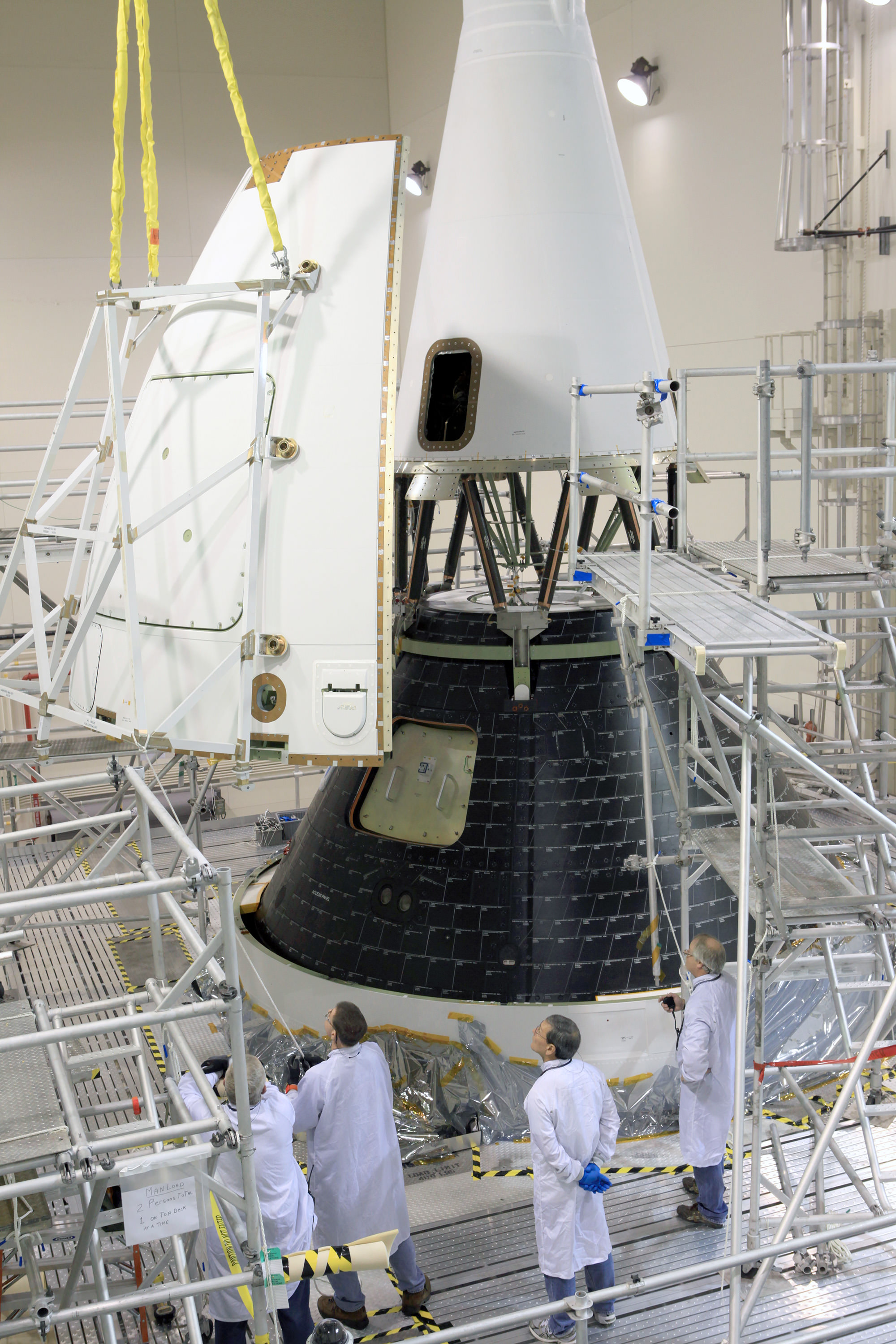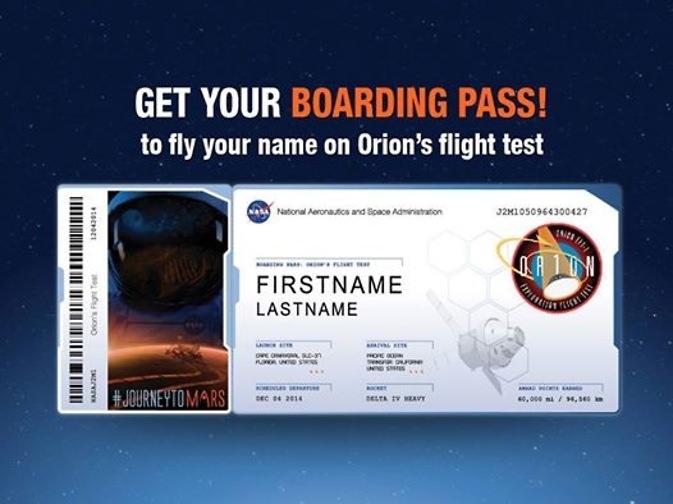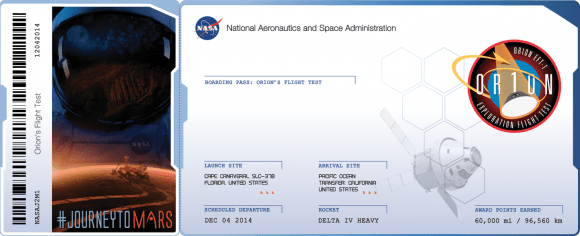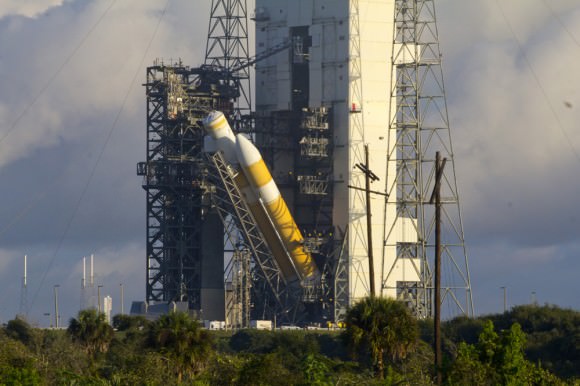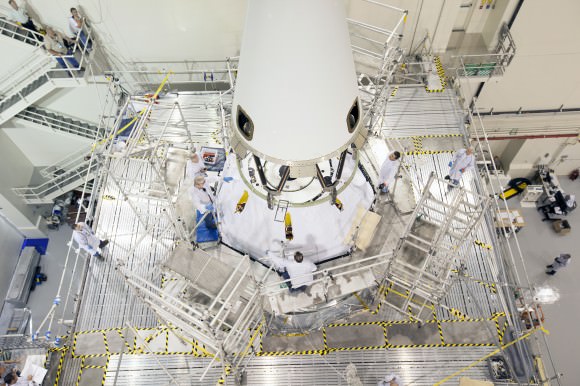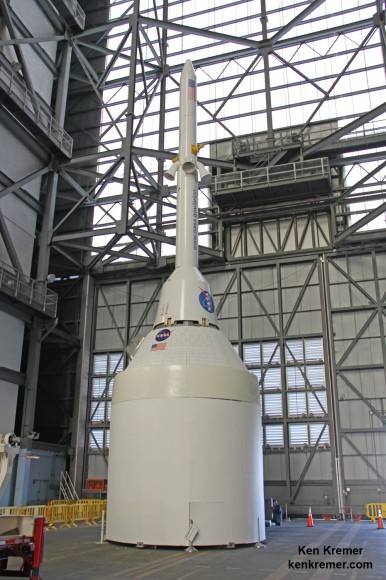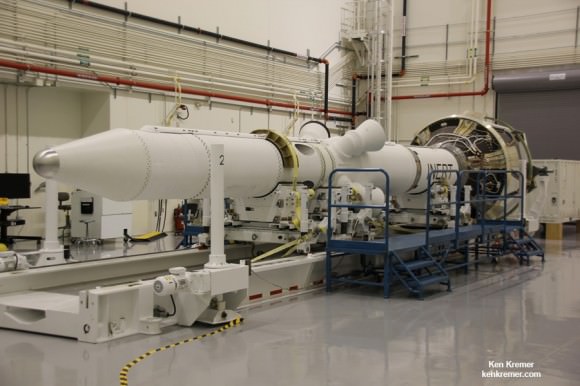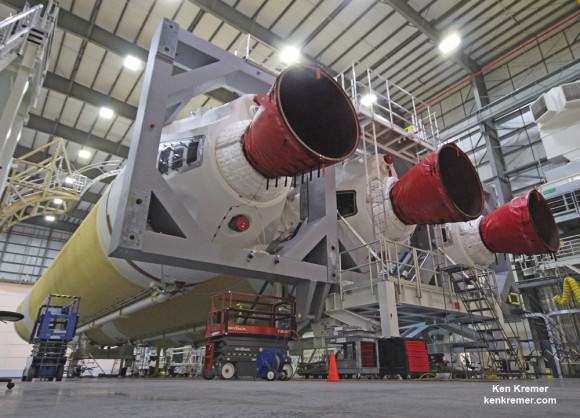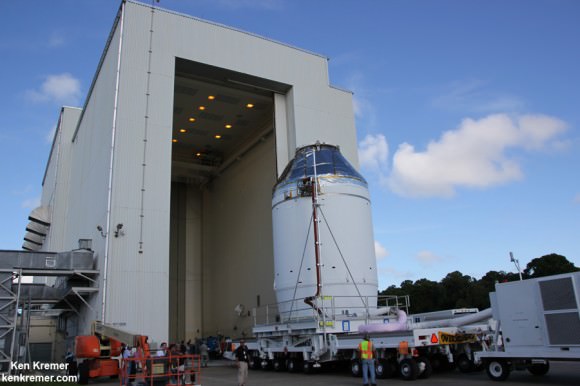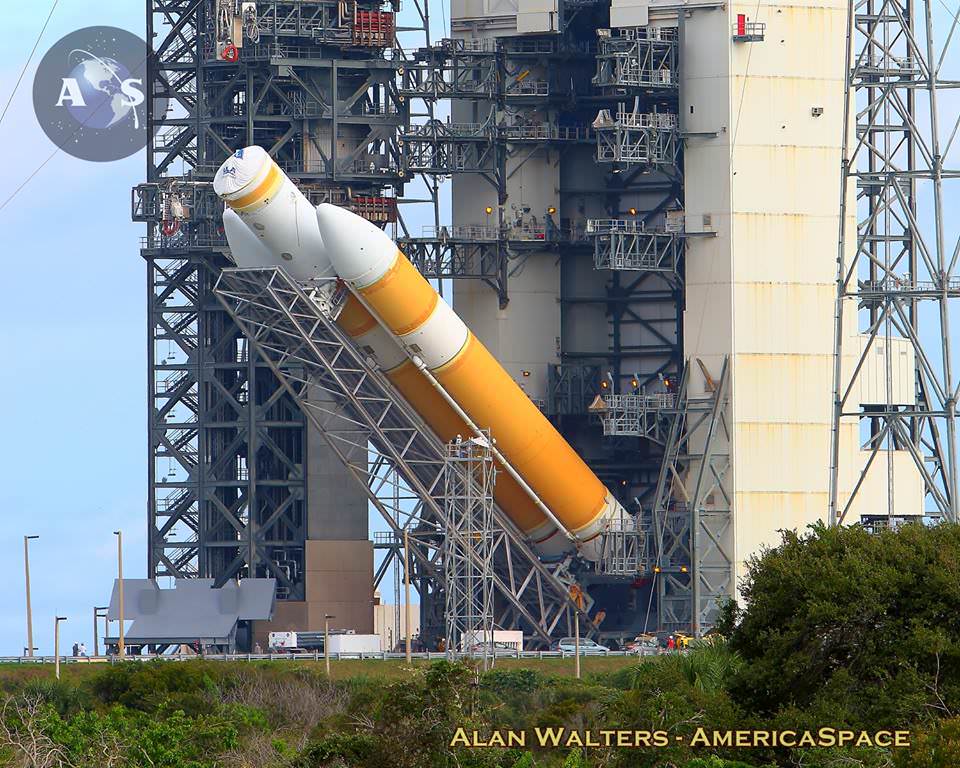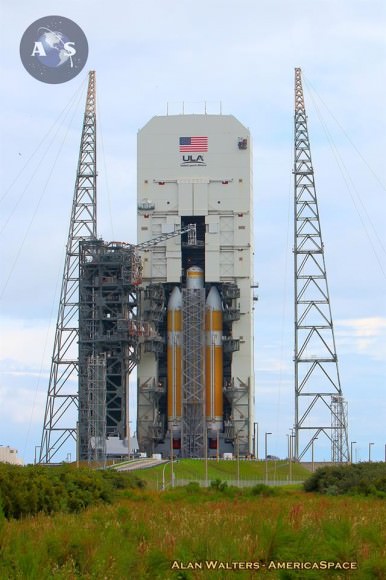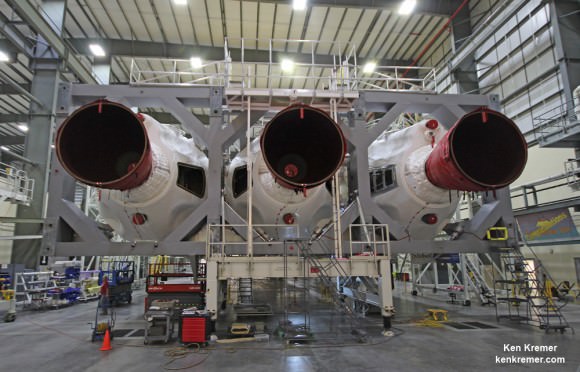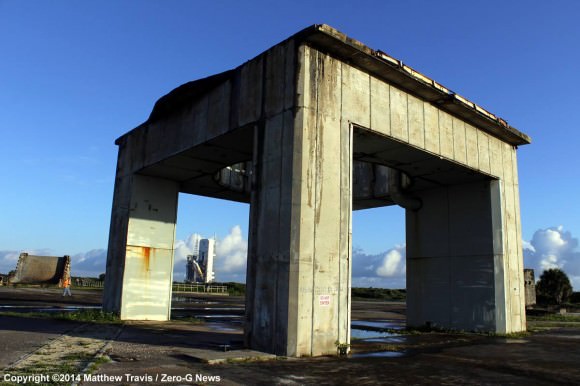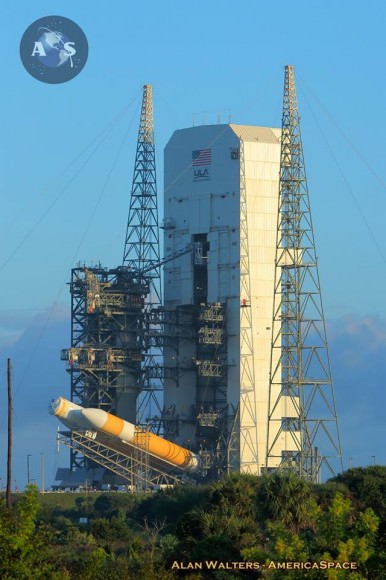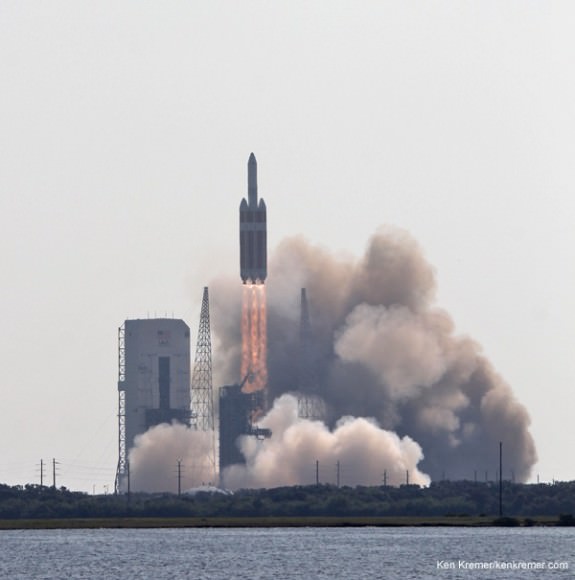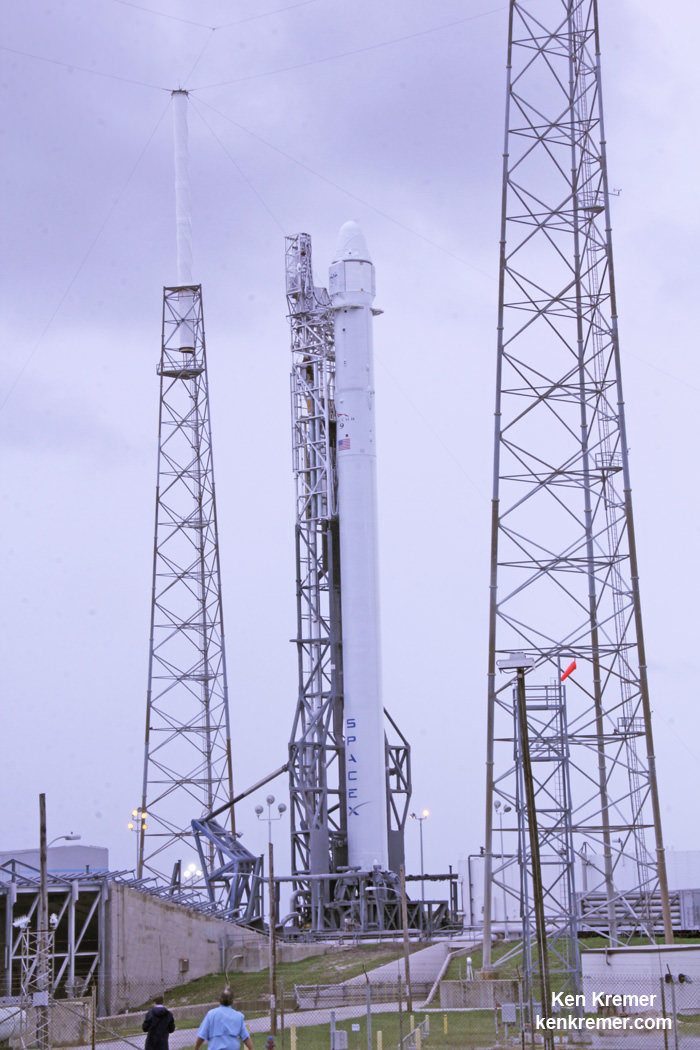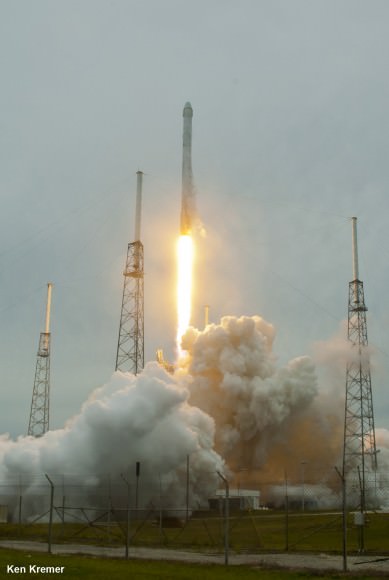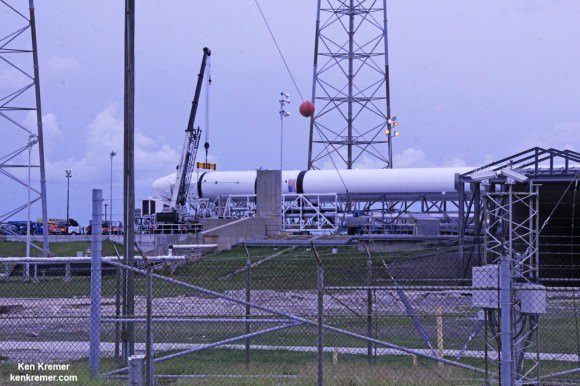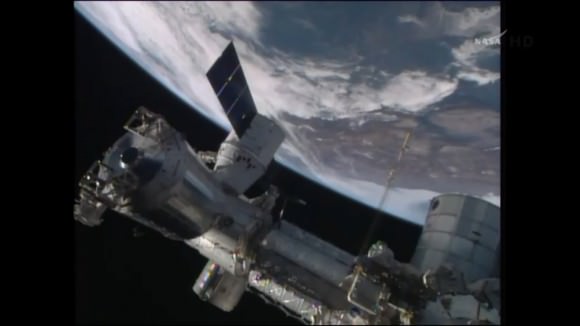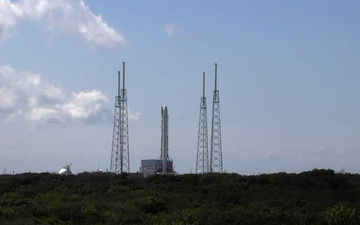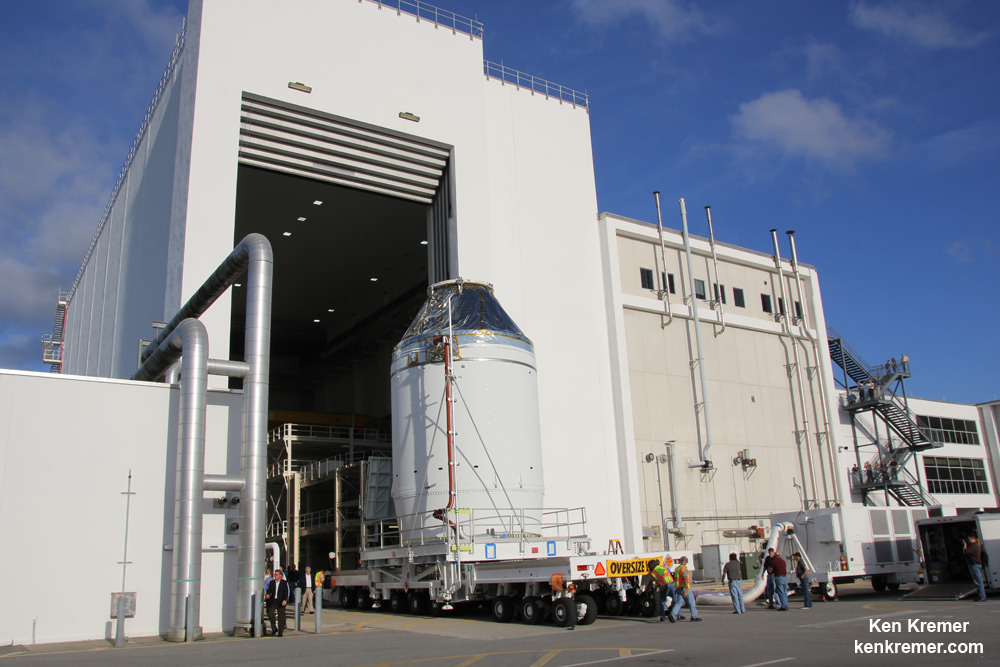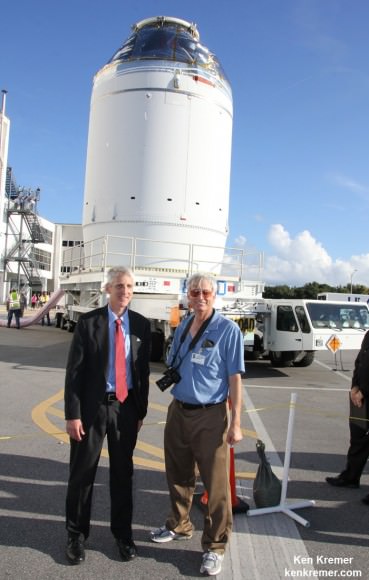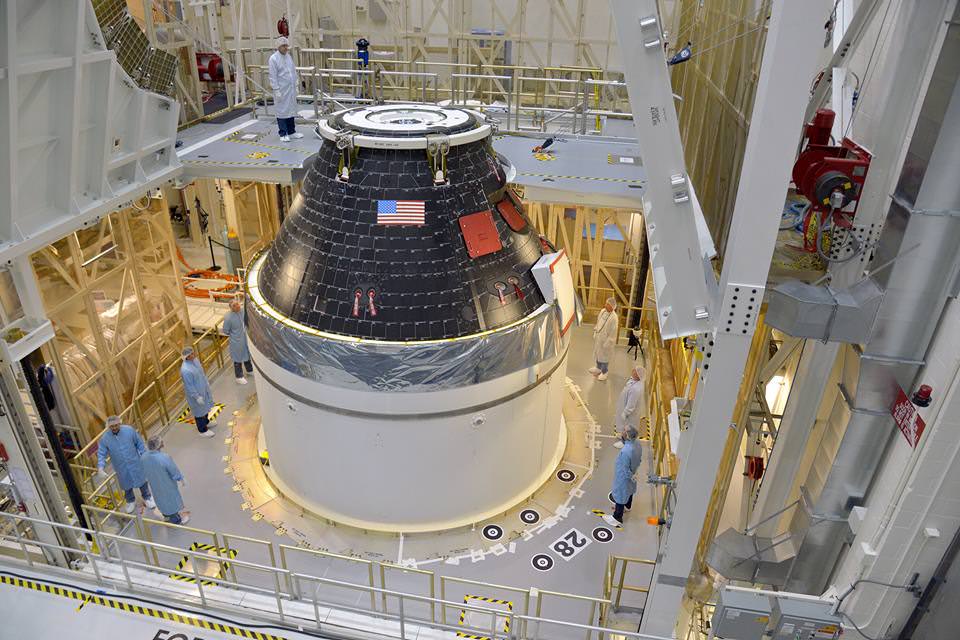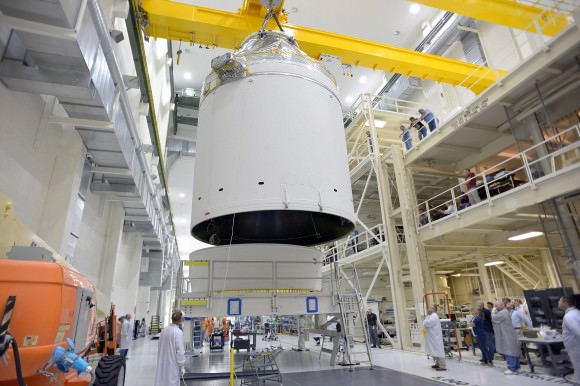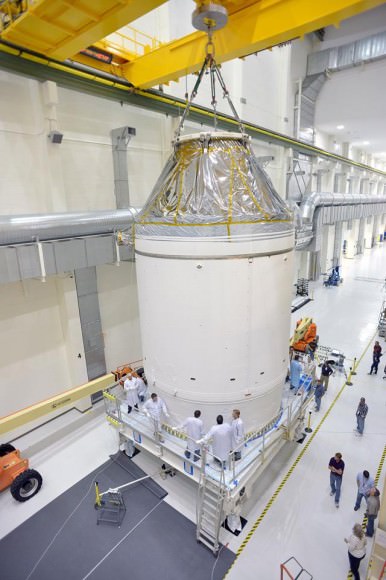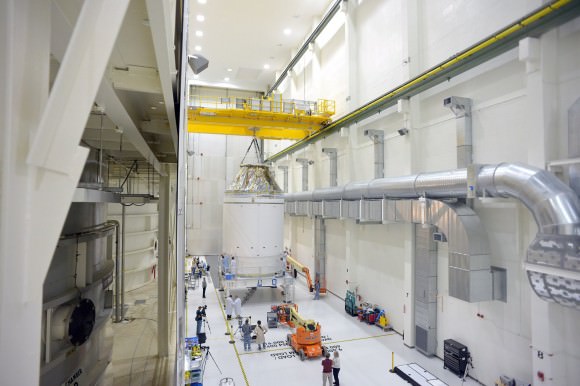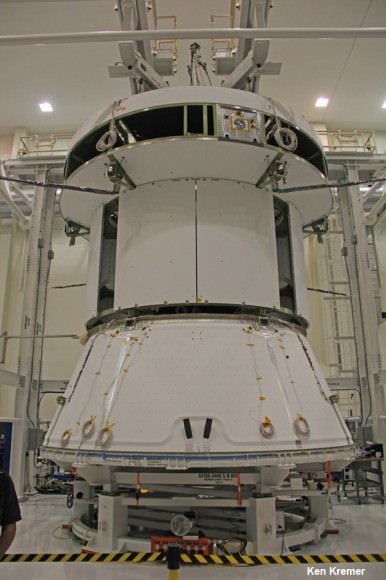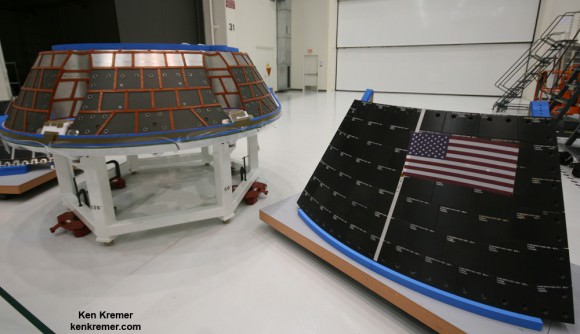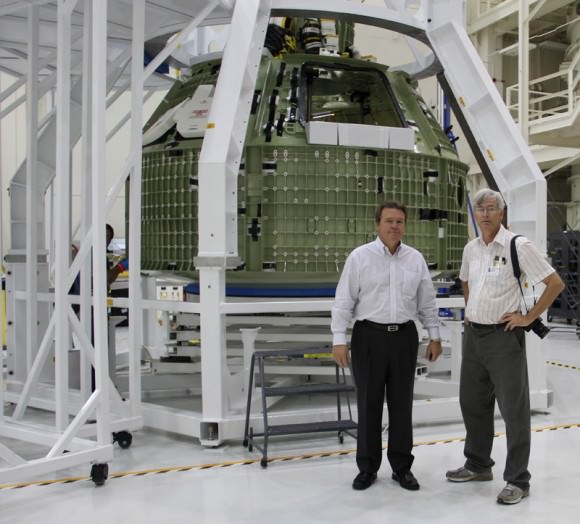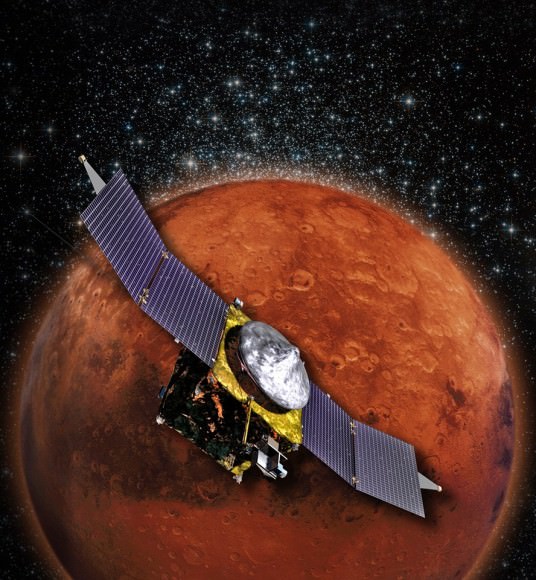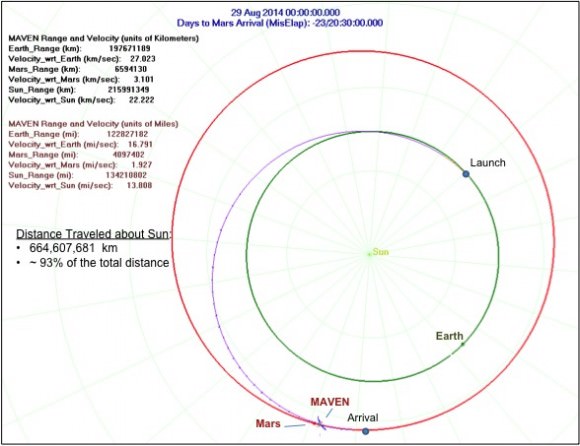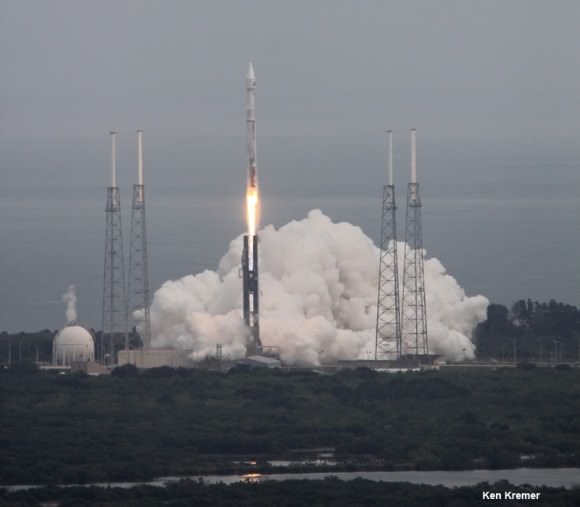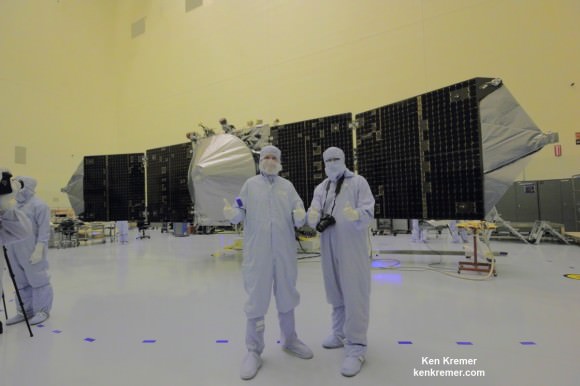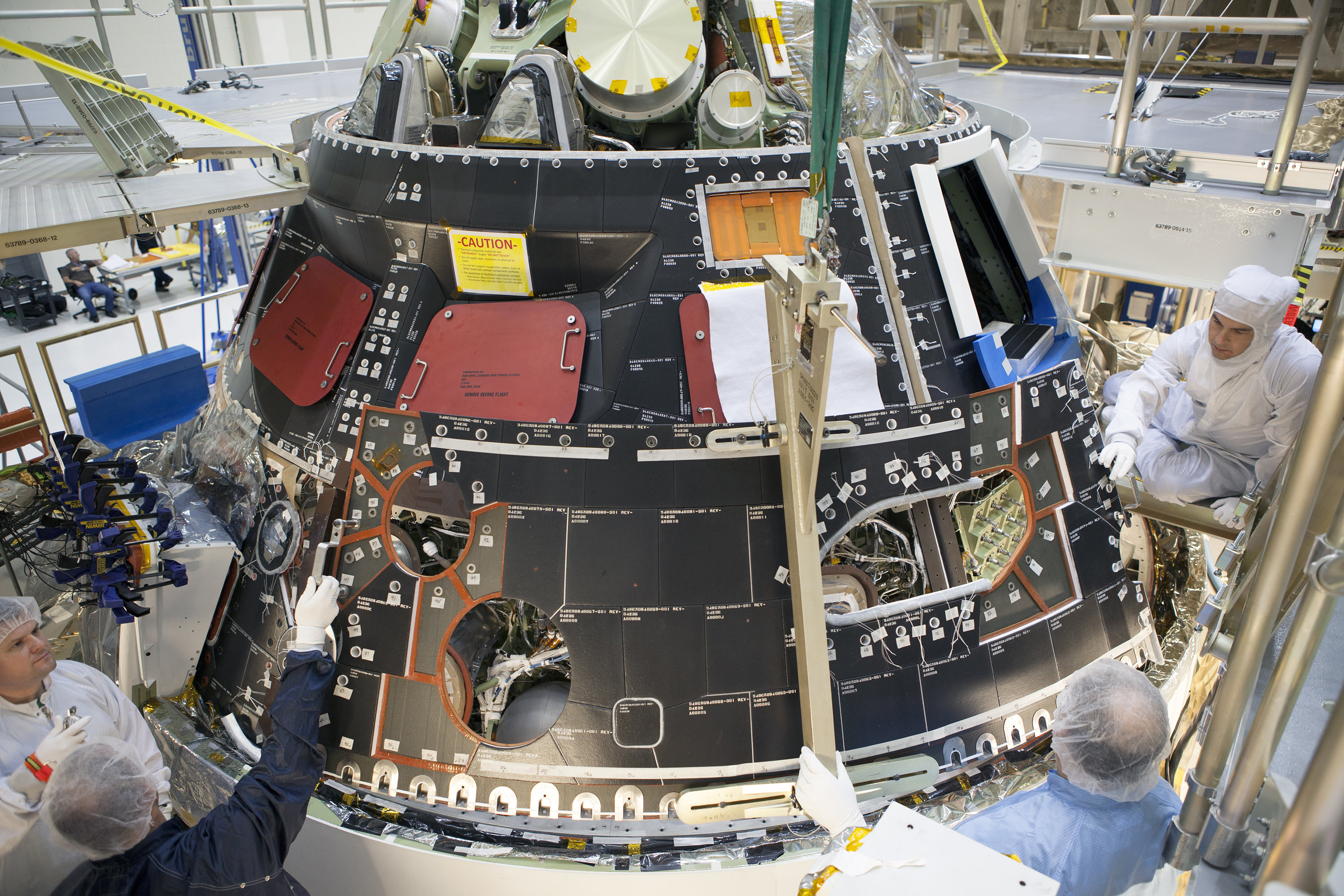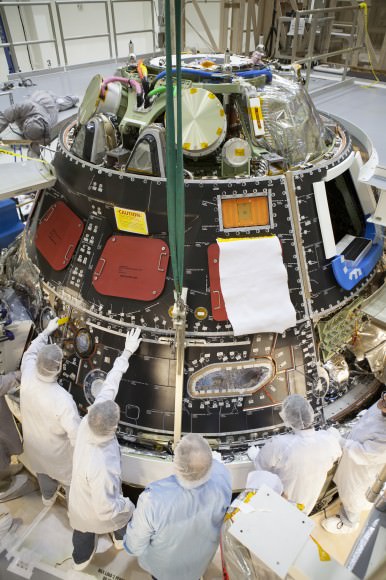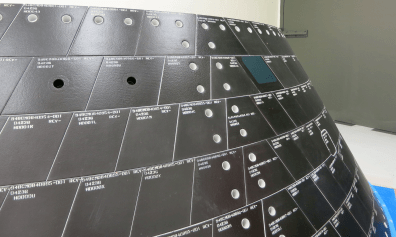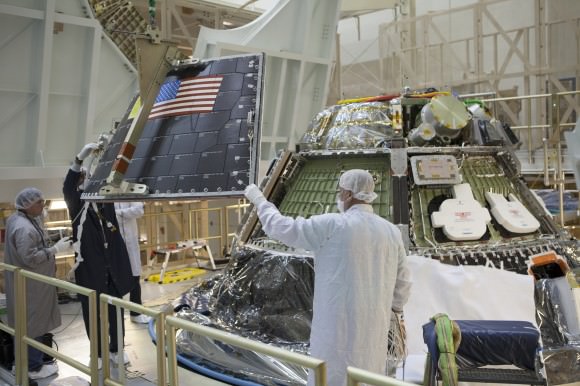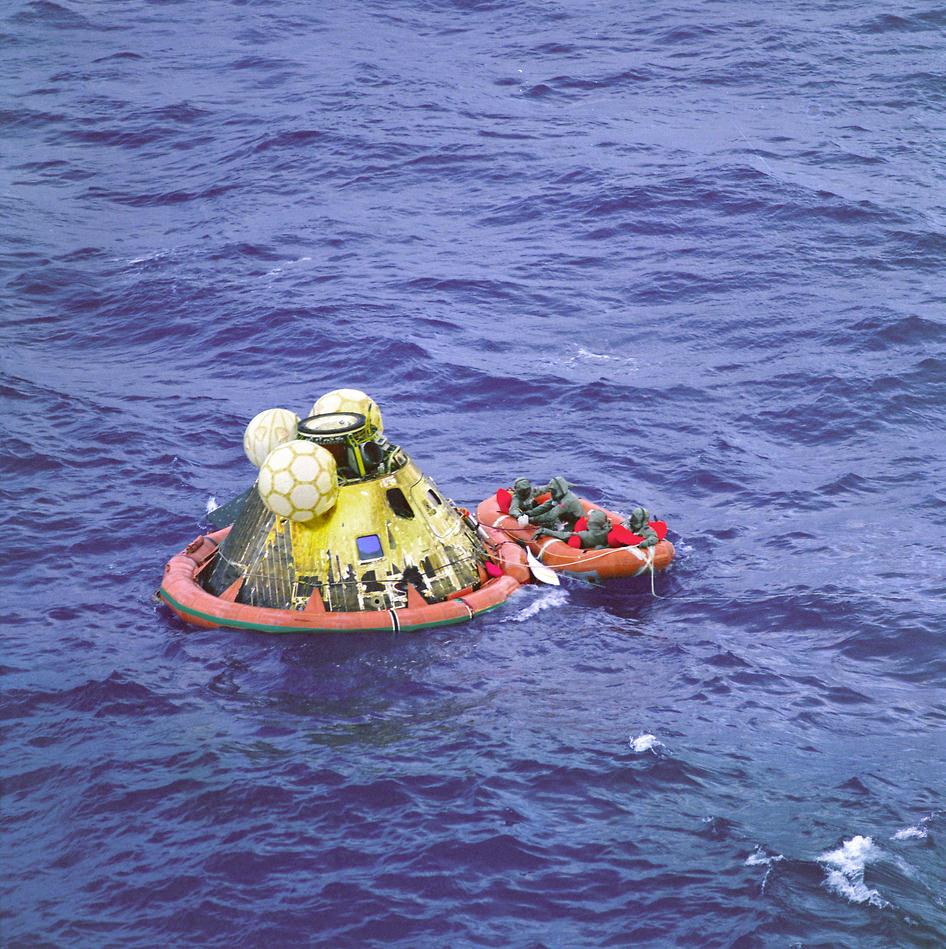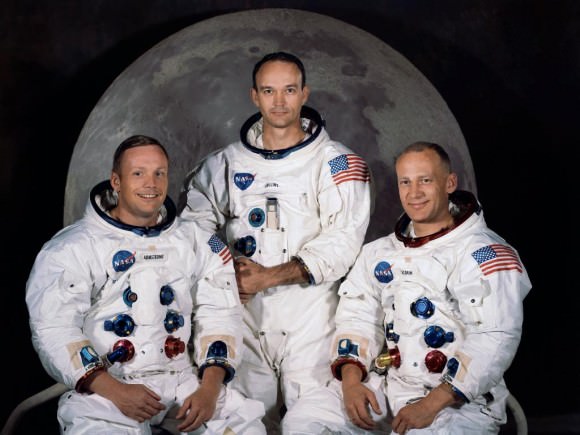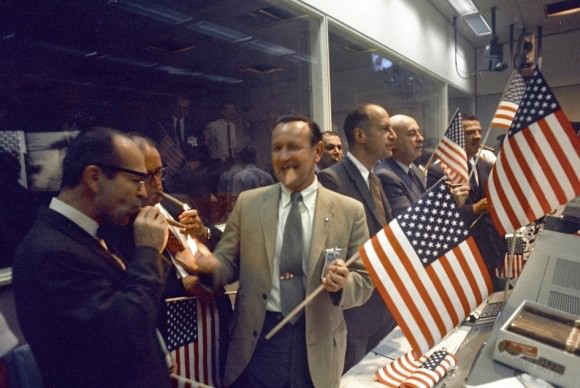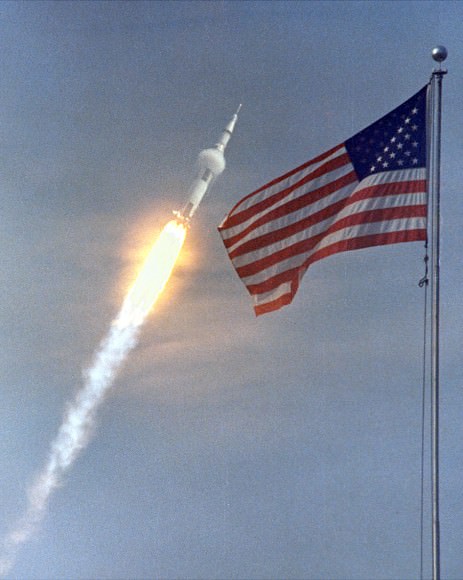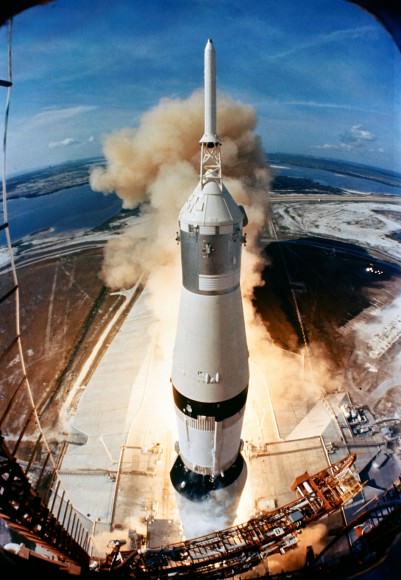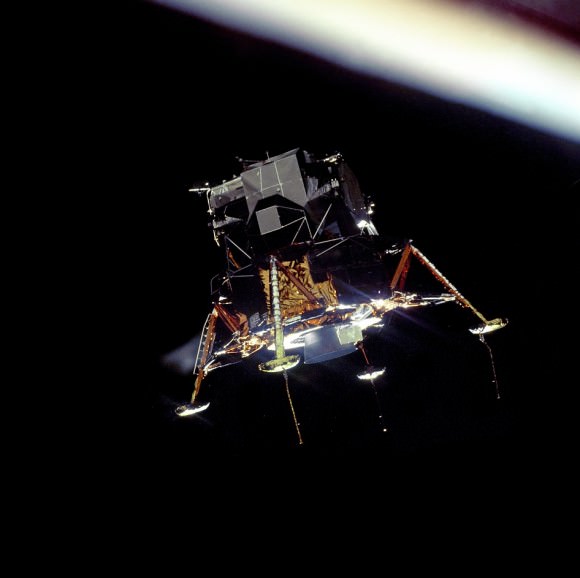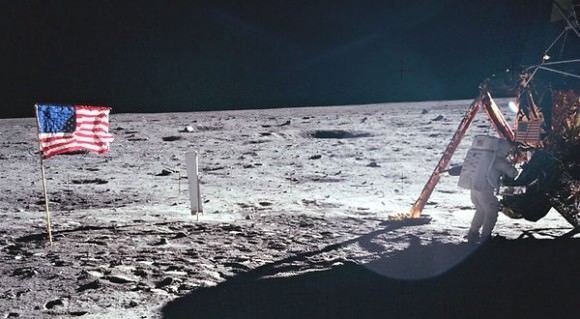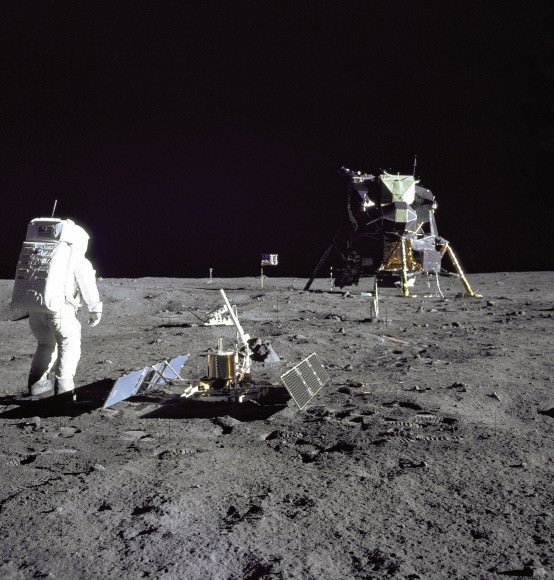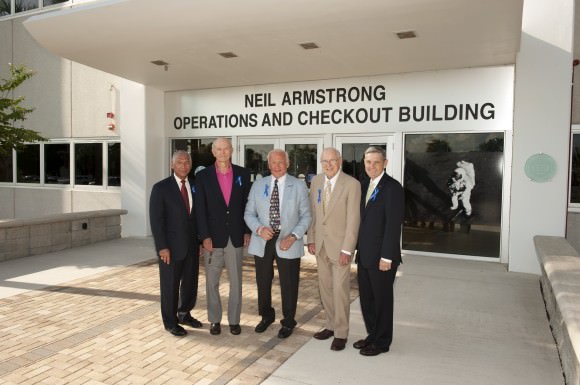Technicians at the Kennedy Space Center have completed the final major assembly work on NASA’s maiden Orion crew module slated to launch on its first unmanned orbital test flight this December, dubbed Exploration Flight Test-1 (EFT-1)
After first attaching the Launch Abort System (LAS) to the top of the capsule, engineers carefully installed a fairing composed of a set of four ogive panels over the crew module and the abort systems lower structural framework joining them together.
“The ogive panels smooth the airflow over the conical spacecraft to limit sound and vibration, which will make for a much smoother ride for the astronauts who will ride inside Orion in the future,” according to a NASA description.
Upon finishing the panel assembly work inside the Launch Abort System Facility (LASF) at NASA’s Kennedy Space Center, the teams cleared the last major hurdle before the Orion stack is rolled out to launch pad 37 in mid-November and hoisted to the top of the Delta IV Heavy rocket.
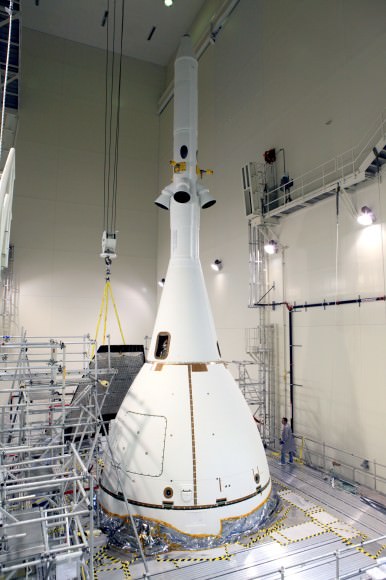
The Orion stack is comprised of the LAS, crew module (CM) and service module (SM).
The maiden blastoff of the state-of-the-art Orion spacecraft on the EFT-1 mission is slated for December 4, 2014, from Space Launch Complex 37 (SLC-37) at Cape Canaveral Air Force Station in Florida atop the triple barreled United Launch Alliance (ULA) Delta IV Heavy booster.
Orion is NASA’s next generation human rated vehicle that will eventually carry America’s astronauts beyond Earth on voyages venturing farther into deep space than ever before – beyond the Moon to Asteroids, Mars, and other destinations in our Solar System.
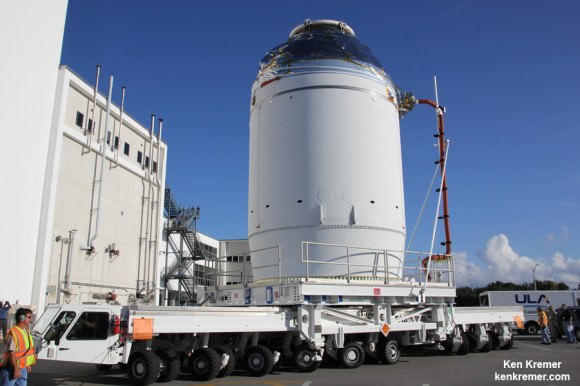
The two-orbit, four and a half hour EFT-1 flight around Earth will lift the Orion spacecraft and its attached second stage to an orbital altitude of 3,600 miles, about 15 times higher than the International Space Station (ISS) – and farther than any human spacecraft has journeyed in 40 years. It will test the avionics and electronic systems inside the Orion spacecraft.
Then the spacecraft will travel back through the atmosphere at speeds approaching 20,000 mph and temperatures near 4,000 degrees Fahrenheit to test the heat shield, before splashing down for a parachute assisted landing in the Pacific Ocean.
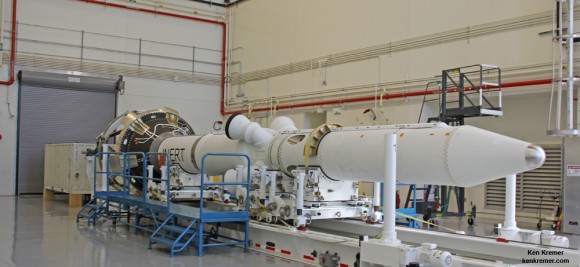
The LAS plays a critically important role to ensure crew safety.
In case of an emergency situation, the LAS is designed to ignite within milliseconds to rapidly propel the astronauts inside the crew module away from the rocket and save the astronauts’ lives. The quartet of LAS abort motors would generate some 500,000 pounds of thrust to pull the capsule away from the rocket.
And don’t forget that you can fly your name on Orion and also print out an elegant looking “boarding pass.”
Details below and in my article – here.
NASA announced that the public can submit their names for inclusion on a dime-sized microchip that will travel on Orion and succeeding spacecraft voyaging to destinations beyond low-Earth orbit, including Mars.
The deadline to submit your name is soon: Oct 31, 2014.
Click on this weblink posted online by NASA today: http://go.usa.gov/vcpz
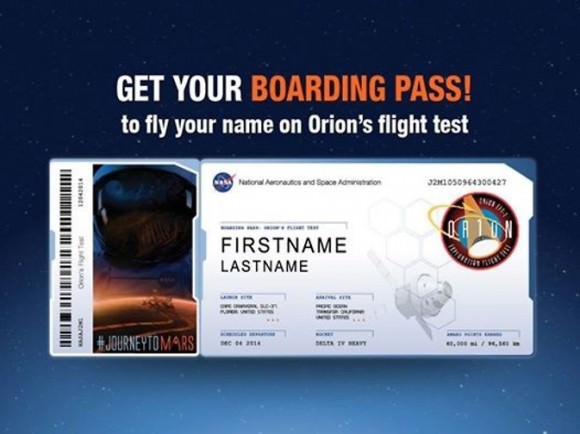
“NASA is pushing the boundaries of exploration and working hard to send people to Mars in the future,” said Mark Geyer, Orion Program manager, in a NASA statement.
“When we set foot on the Red Planet, we’ll be exploring for all of humanity. Flying these names will enable people to be part of our journey.”
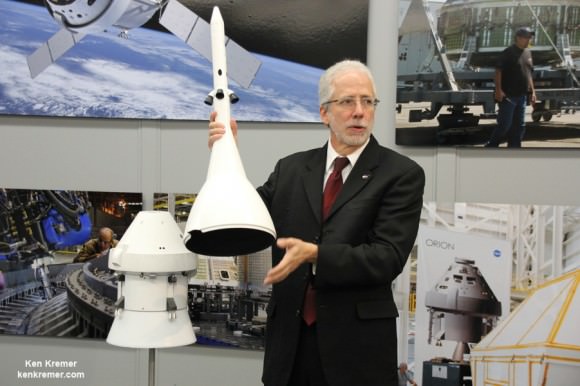
Stay tuned here for Ken’s continuing Orion and Earth and planetary science and human spaceflight news.
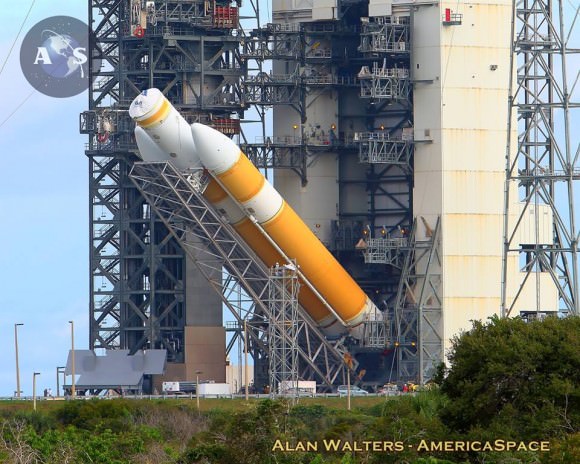
…………….
Learn more about Orion, Space Taxis, and NASA Human and Robotic Spaceflight at Ken’s upcoming presentations:
Oct 26/27: “Antares/Cygnus ISS Rocket Launch from Virginia”; Rodeway Inn, Chincoteague, VA

